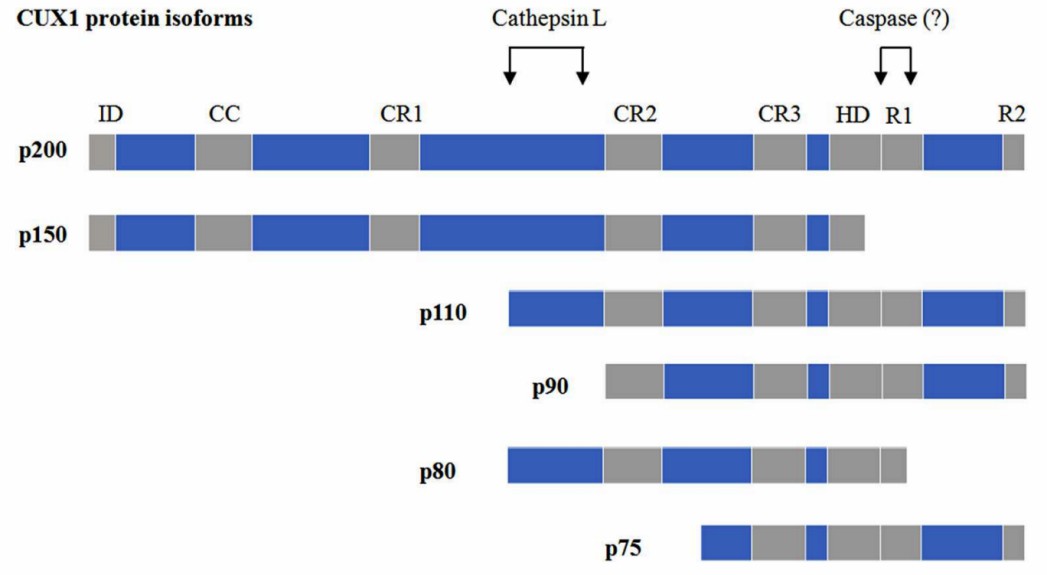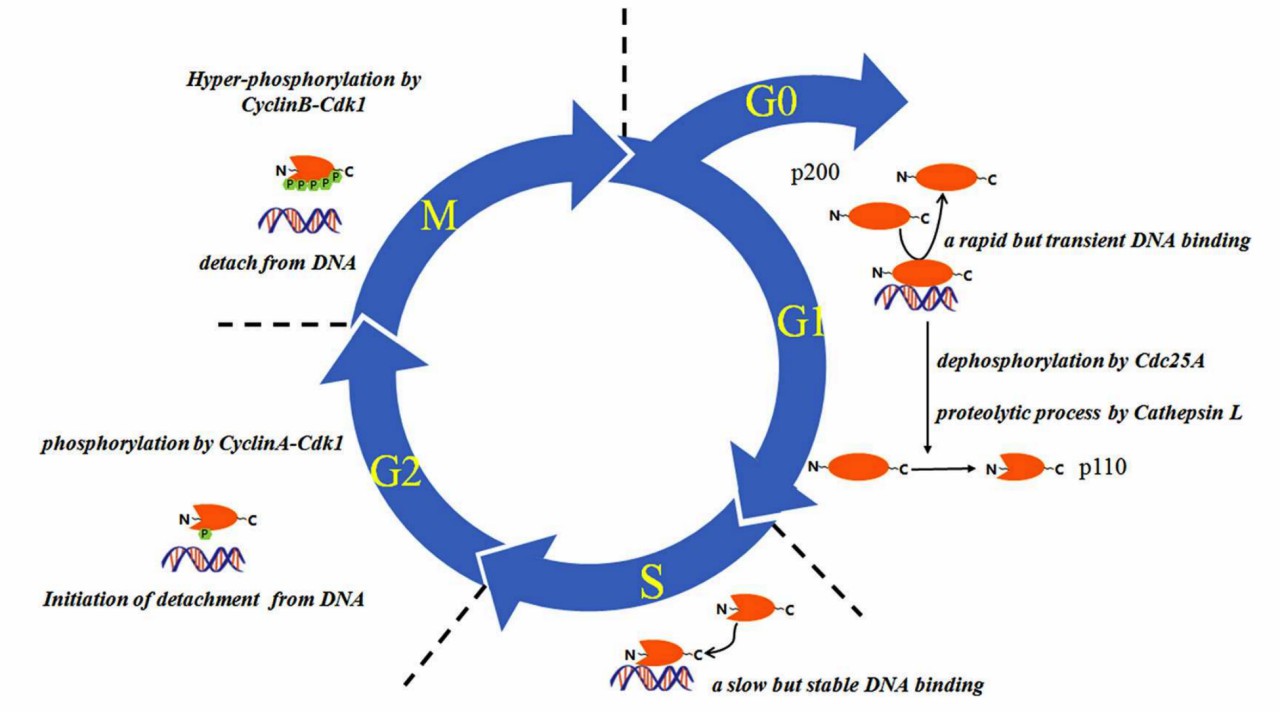CUX1 and Associated Diseases
Creative Biolabs is committed to accelerating the development of gene therapy. Based on our understanding of gene therapy and potential target genes, we now describe the CUX1 gene and associated diseases for our clients all over the world.
Overview of CUX1
Encoded by the CUX1 gene, CUX1, also known as CDP or CUTL1, is a homeodomain protein in humans. For CUX1, there are 4 DNA-binding domains (DBDs) including 3 cut repeats (CRs) and 1 homeodomain (HD). Depending on the molecular weight, CUX1 isoforms contain p75, p80, p90, p110, and p150. According to the present DBDs, the CUX1 isoforms have different DNA-binding patterns and dynamics. For example, full-length CUX1 (p200) binds to DNA at the -CCAAT motif in a quick but short manner and acts as a transcriptional repressor. p150 functions as a dominant-negative isoform in lactating mammary glands, whereas p110, p90, and p75 can bind to DNA at ATCRAT motifs and function as repressors or activators in a promoter-dependent manner.
 Fig.1 Description of CUX1 isoforms and proteinases. (Liu, 2020)
Fig.1 Description of CUX1 isoforms and proteinases. (Liu, 2020)
Functions of CUX1
As a member of the homeodomain family of DNA-binding proteins, CUX1 plays a key role in various biological processes. During nervous system development, CUX1 has been proven to stimulate dendritic branching, spine development, and synapse formation in cerebral cortex layer II-III neurons. CUX1-DNA binding can be detected in late G1 and peaks in the S phase. Furthermore, CUX1 (p110) overexpressed cells showed accelerated entry into the S phase and promoted cell proliferation. There are 18 DNA damage response (DDR) related genes that have been identified to be the targets of CUX1 (p110). CUX1 has direct transcriptional regulation of these DDR genes and may also function as a cofactor.
 Fig.2 The proteolysis and DNA binding of CUX1 are regulated in a cell cycle–dependent manner. (Liu, 2020)
Fig.2 The proteolysis and DNA binding of CUX1 are regulated in a cell cycle–dependent manner. (Liu, 2020)
CUX1 in Tumor Development
In the past decades, increased expression of CUX1 has been observed in various cancers, such as multiple myeloma, colorectal cancer, pancreatic cancer, and melanoma. Furthermore, CUX1 was able to enhance tumor cell proliferation, migration/invasion, and reduce apoptosis. However, some studies showed that CUX1 can also as a tumor suppressor in different types of cancers. Analysis of genome sequences from 28 tumor types revealed CUX1 nonsense and frameshift mutations in 1-5% of them, and CUX1 deficiency leads to activation of cancer-promoting PI3K-AKT signaling. In summary, the tumor suppressor or oncogenic role of CUX1 makes it a therapeutic target for tumors
Creative Biolabs is a leading service provider that focuses on gene therapy development. We can assist you in designing the best research outline customized to meet the requirements of clients’ programs. If you are interested in our services and products, please do not hesitate to contact us for more details.
Reference
- Liu, N.; et al. CUX1, a controversial player in tumor development. Frontiers in oncology. 2020, 10: 738. Distributed under Open Access license CC BY 4.0, without modification.
